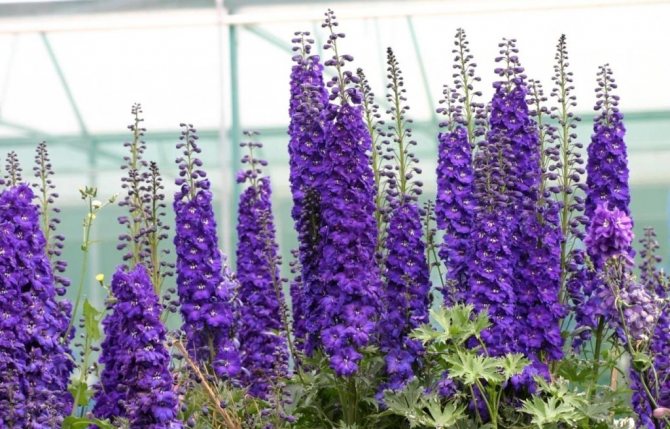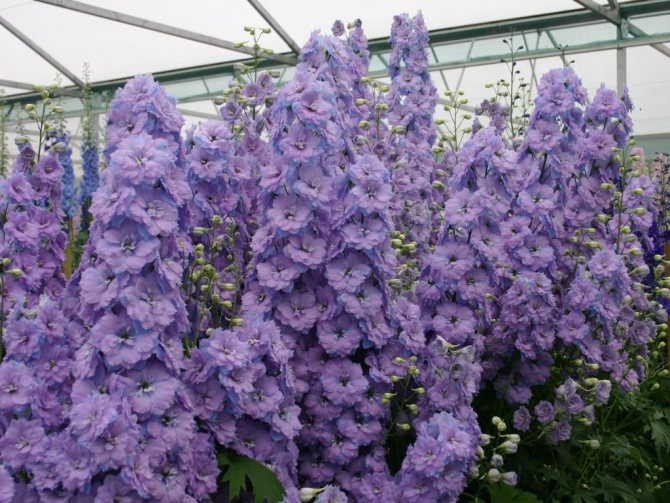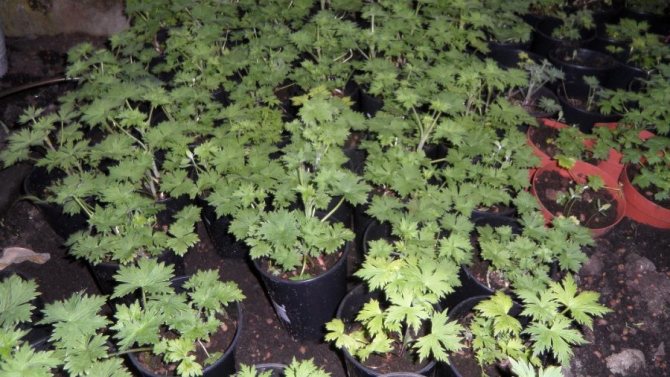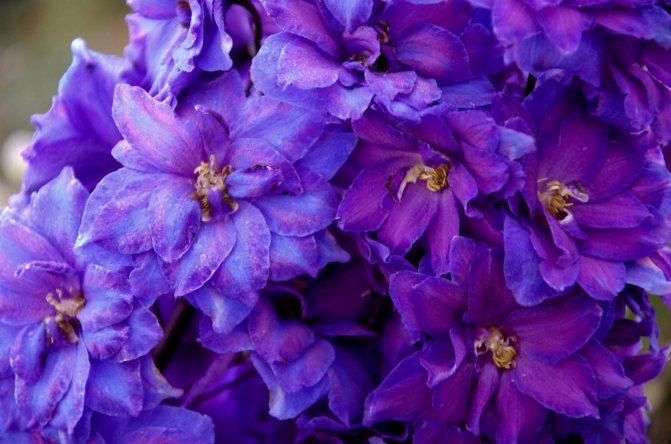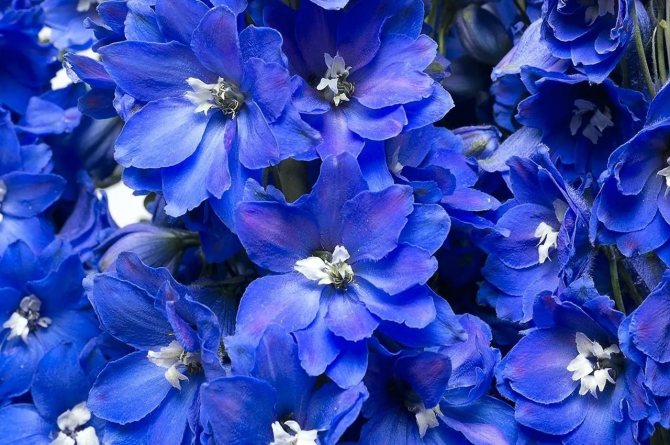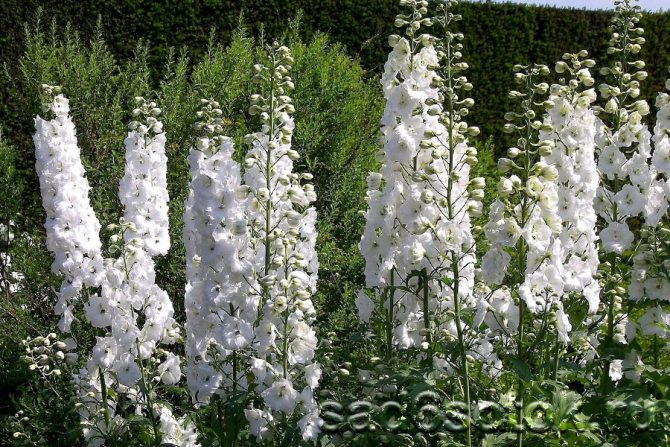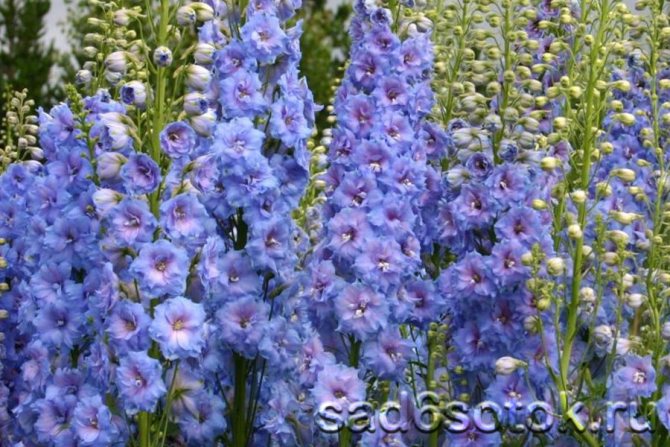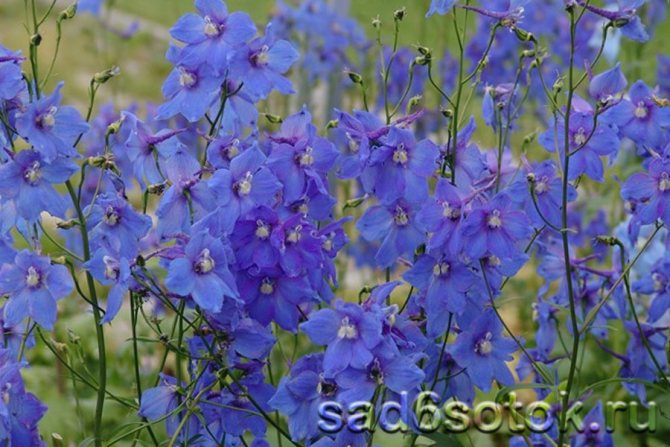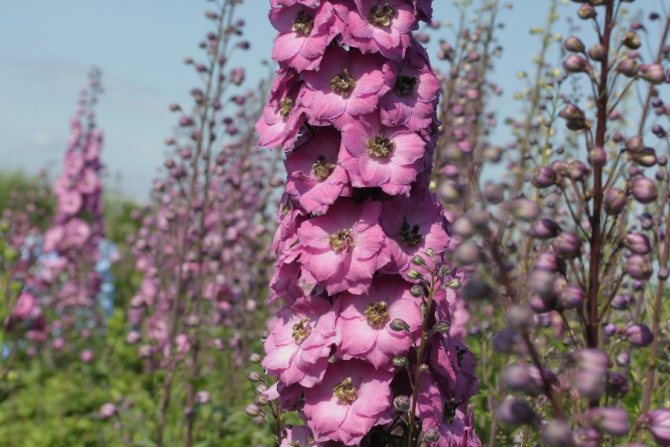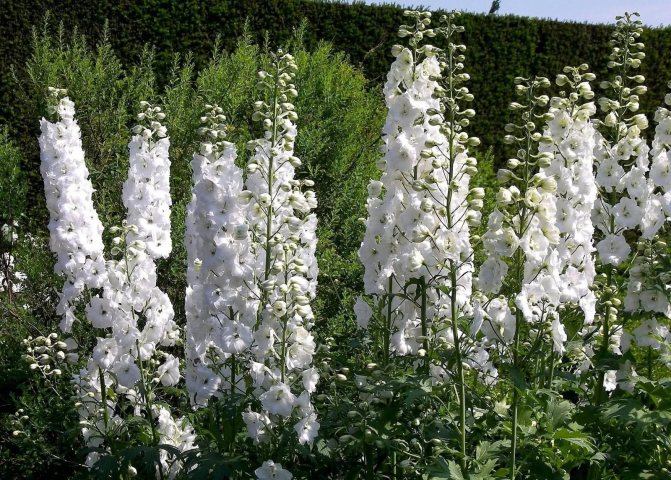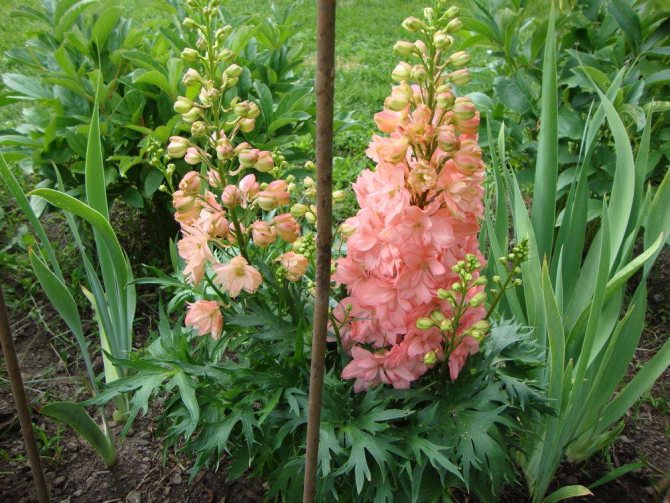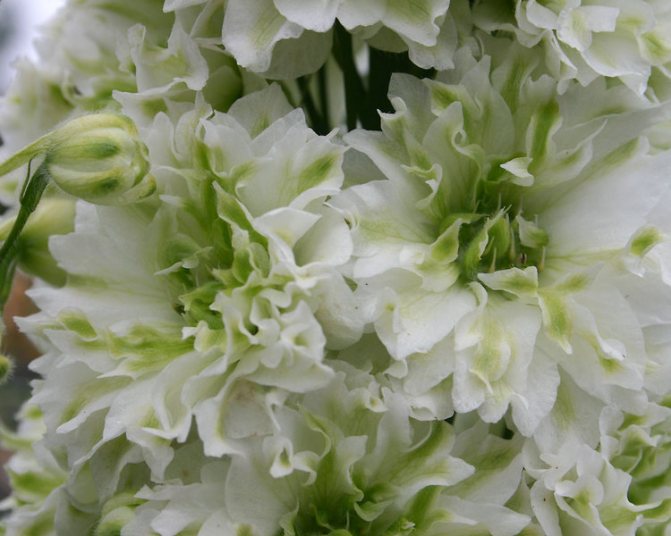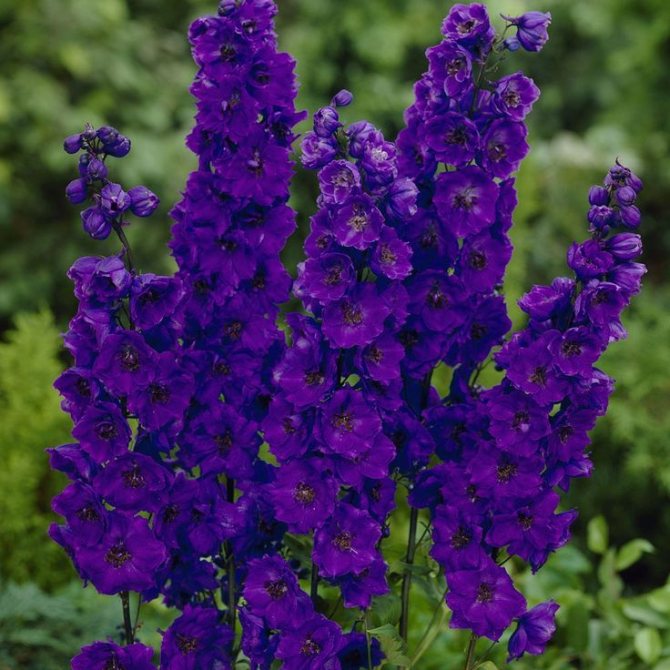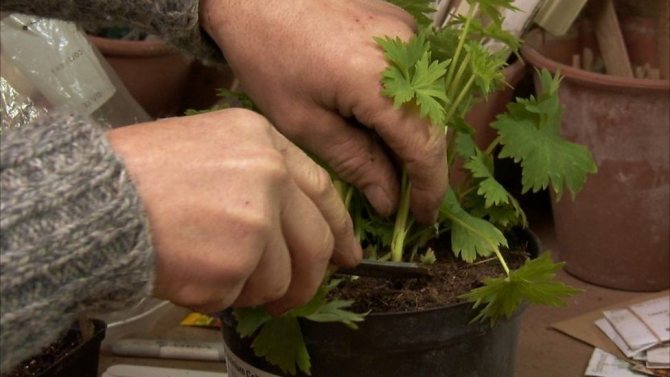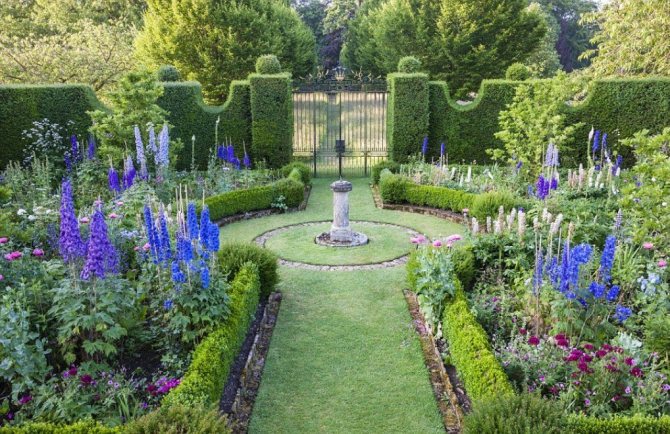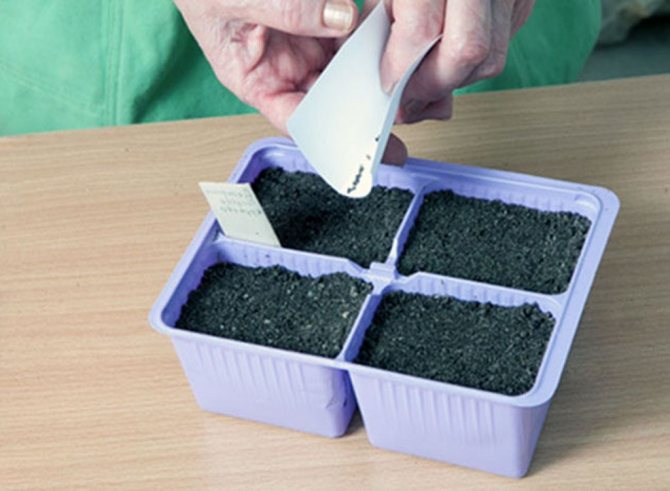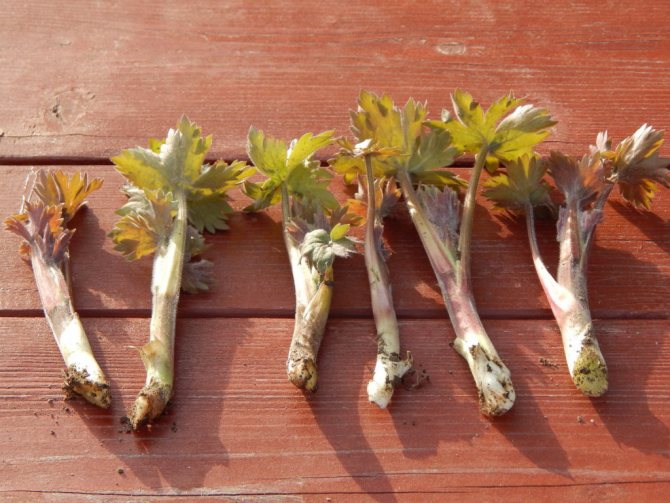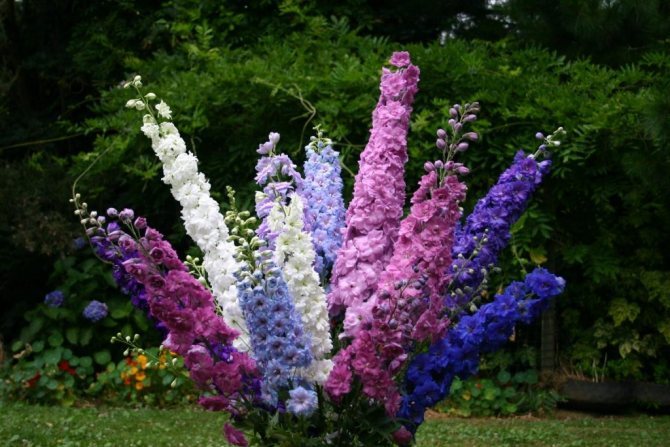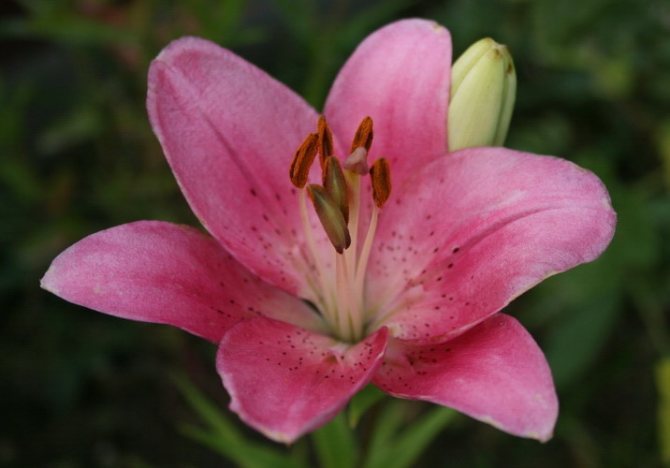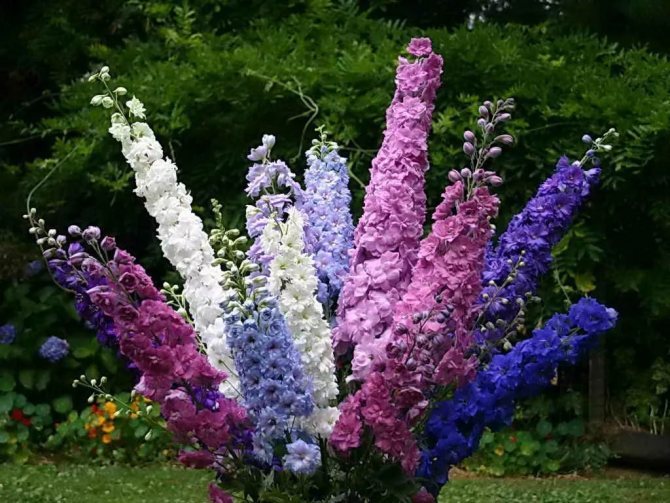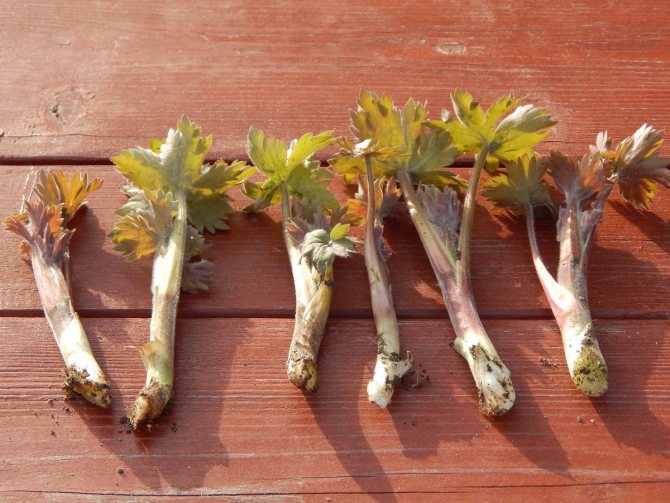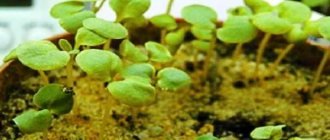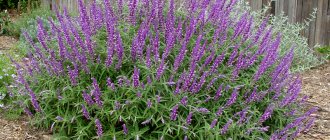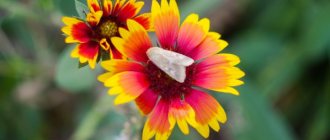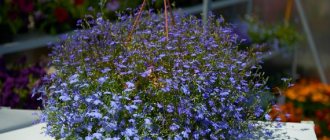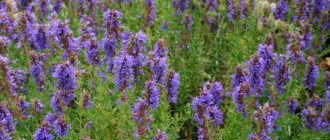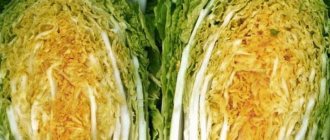Delphinium perennial - planting and growing
Delphinium (Delphinium) is a beautiful plant that has many varieties and shades. In addition to beauty, this culture does not require complex care and transplantation. All this makes the plant attractive to many gardeners who want to decorate their plots and flower beds with bright flowers.
Delphinium species
Delphiniums are perennial and annual plants of the buttercup family. There are many varieties of delphiniums. Depending on them, they are high, up to three meters, and very tiny, only 10 cm.
Delphiniums are loved for their beautiful inflorescences, in the form of a panicle or brush. There can be from 3 to 15 flowers in a panicle. And in the inflorescence-brush - from 50 to 80 simple or double flowers.
The more flowers are located along the axis of the stem, the more perfect the variety is. The density of the arrangement of flowers and their doubleness are also appreciated.
Delphiniums look especially impressive among other perennials, so they are used in various flower beds, mainly multilevel elongated ones. By timing, perennial and annual plants are distinguished. Annuals are considered easier to grow. The most popular among them are the field delphinium and the Ajax delphinium.
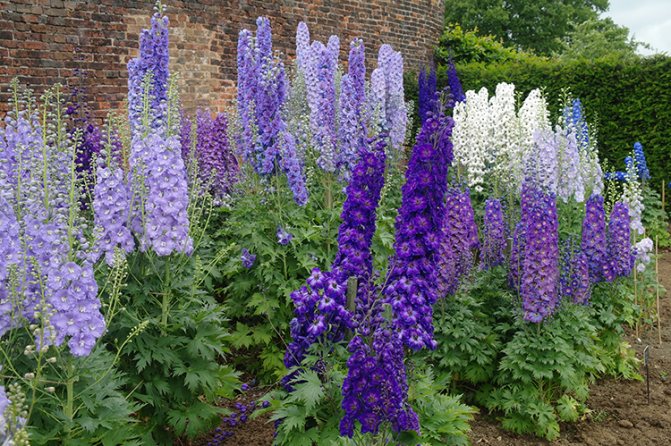
Delphinium Field (Delphinium Consolida)
The field delphinium grows from one to two meters in height. Which, in comparison with perennial 3-meter giants, is not considered outstanding. By the name, you can determine that the plant has been cultivated. The first mention, when it was transferred from wild to garden, occurs in the second half of the 16th century.
After that, its selection begins. Now among the field delphiniums there are varieties of different colors: blue, blue, pink, white and lilac. The middle of the flower can also be different. In color, it can be in harmony with the main color, or it can contrast.
Consider several varieties of this type:
Pink waltz... Plant height is 1.2 m on average. It is a mixture of pink, blue, white and lilac delphiniums. The variety is suitable for planting in groups in stocks.
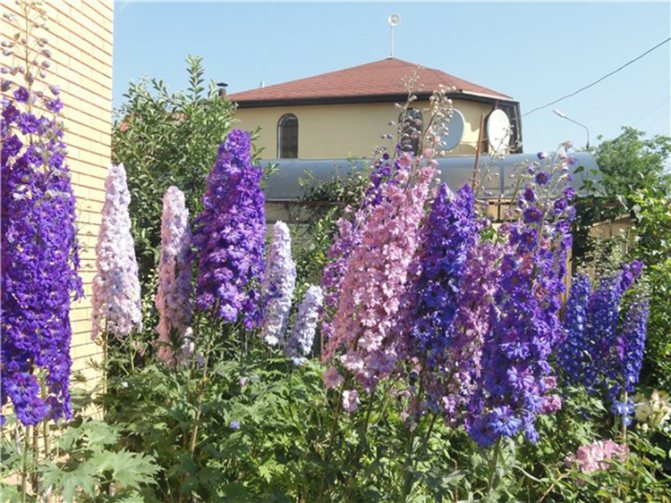

Summer dance... This is a mixture of delphiniums up to 1.3 m high. Flowers on the plant are both double and semi-double. This variety is used in flower beds with annual crops, as well as for cutting.
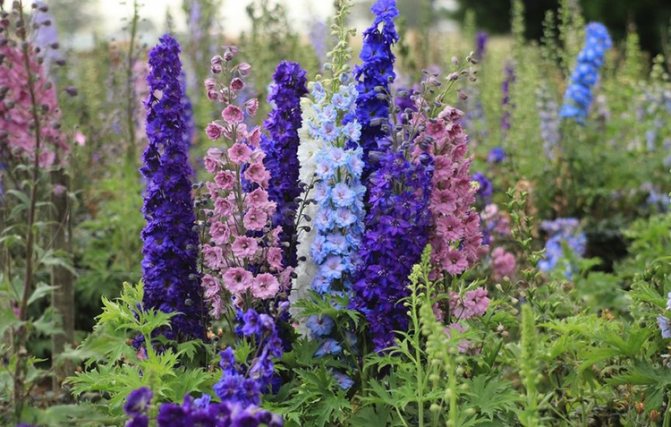

Hyacinth... It represents the garden group of hyacinthous delphiniums. The variety has a high score for decorativeness, since it has spectacular double and non-double flowers with a diameter of about 5 cm, which are collected in 30 cm panicles. The height of the plant itself is about 130 cm.
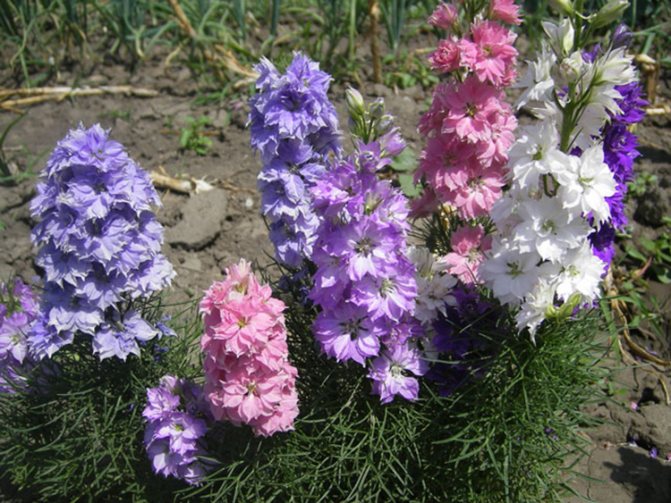

Defile... Annual delphinium, about 1.5 m in height. Panicles are loose, flowers are large. This variety is quite strong, so it looks impressive both in single and in group plantings.
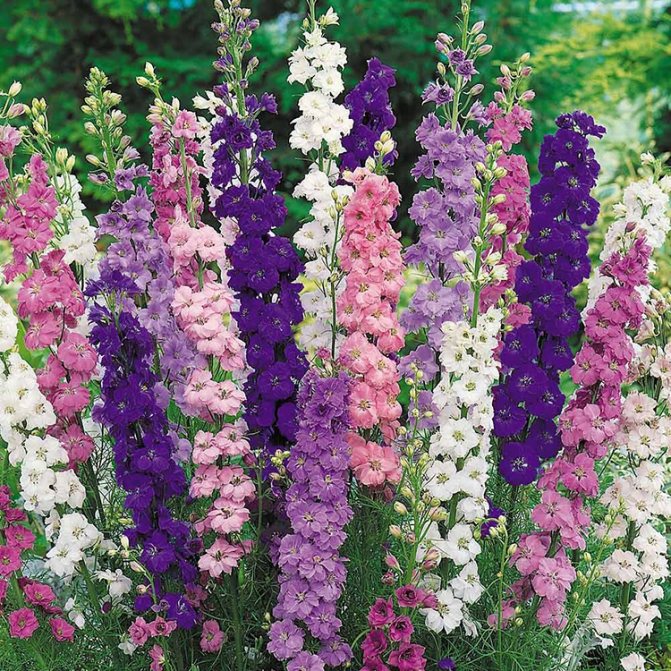

Star flare... The height of the plant, together with the spike, is 1.2 m, and the length of the inflorescence itself is 35 cm. It is loose, but in group plantings it looks impressive. Double and semi-double flowers are very beautiful when cut. Flowering from July to frost.
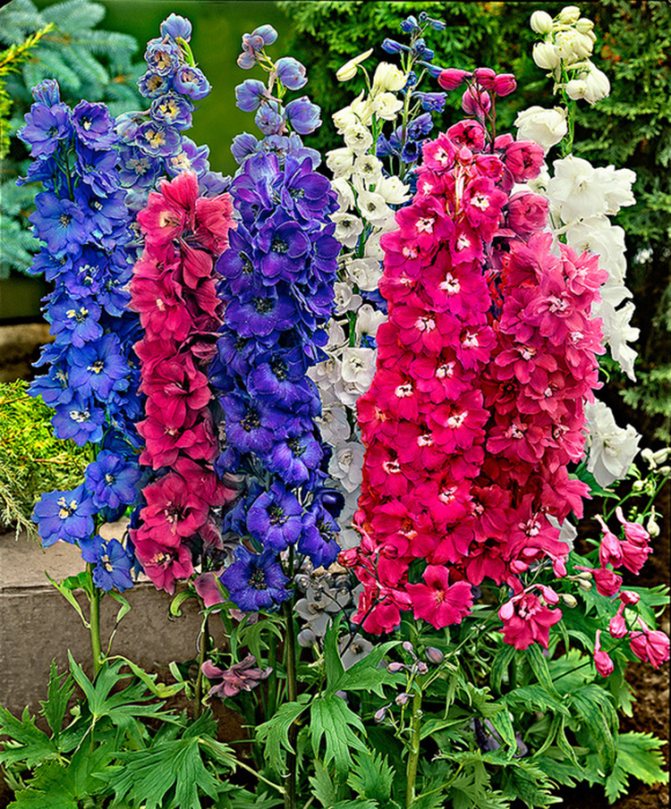

Although growing delphiniums is challenging, ranging from seed storage to growing diseases, it is believed that annuals are easier to care for.
Delphinium Ajax
This is a hybrid delphinium, which is the result of crossing two original forms: the dubious and the oriental species. Also, like the field hybrid, it is an annual that is often planted due to its ease of growing. Ajax varieties are common in garden plots.
They can be recognized by their small size. The smallest ones have a height of only 20-30 cm. And in general, the Ajax delphinium does not exceed 1 m. Flowers, both in shape and color, can vary greatly.
The following varieties are known:
Imperial... Height 80 cm. Flowers are dominated by blue and lilac of varying degrees of saturation. The panicle is disproportionately long in relation to the height of the plant.
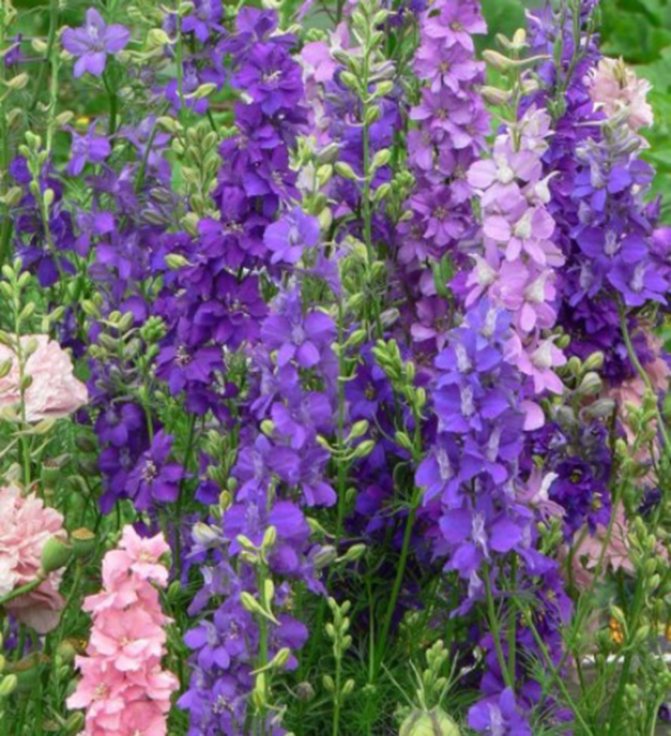

Russian size... Despite the 120 cm indicated on the package, these plants rarely go beyond 60-80 cm. They are distinguished by spectacular bright pink flowers and beautiful carved leaves. Looks good in cut and in group plantings.
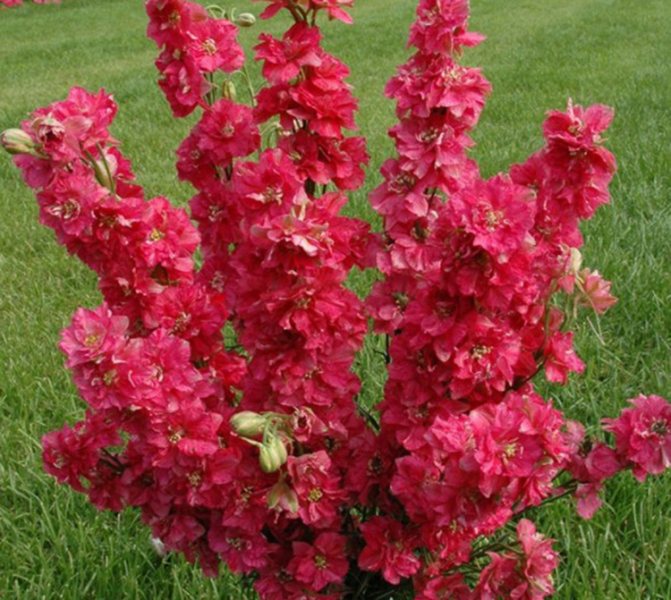

Messenger white... Snow-white huge flowers with a diameter of about 7 cm, sparsely scattered along the top of the stem. Plant height is about one meter.
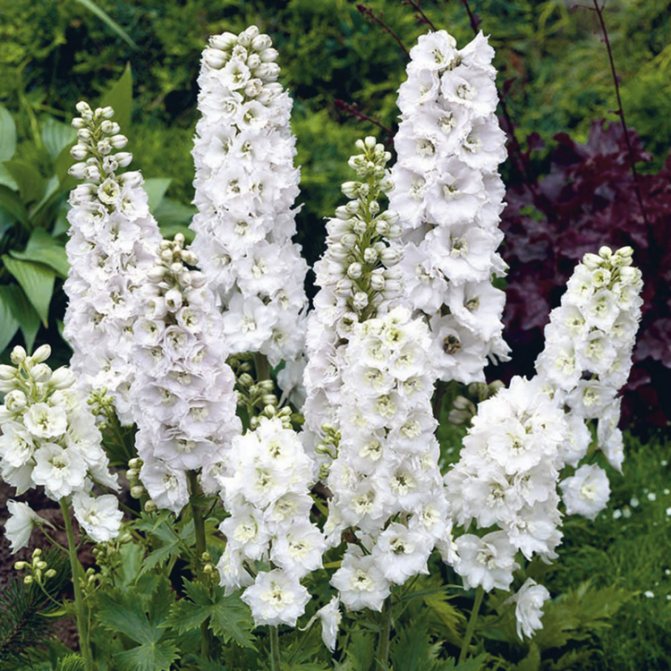

Atlantis (Atlantis)... A short plant, up to a meter, with a straight and firm stem. Color - ultramarine. The flowers are located at a distance from each other, there is no panicle as such, the flowers are located far from each other, but the plant does not lose its decorative effect from this.
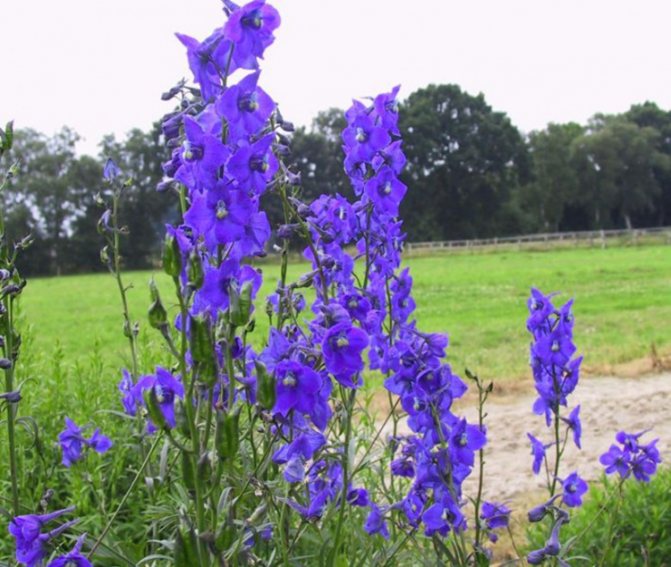

Piccolo... Low, but one of the most abundant flowering. Flowers of a lilac-blue hue.
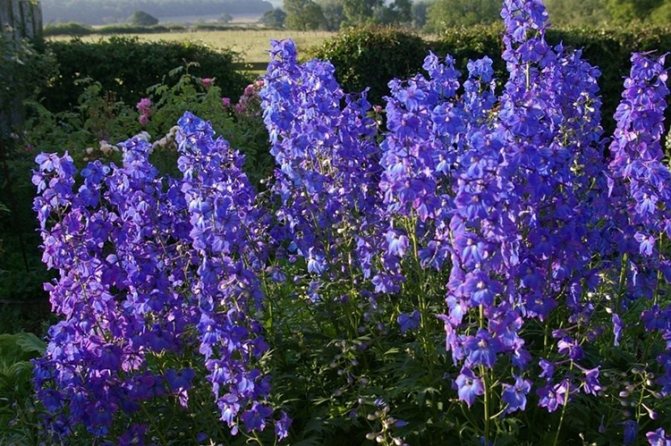

Ajax delphiniums grow in the same way as other species. The cultivation methods are also similar.
Description
Delphinium (Delphinium) belongs to the buttercup family. The unblown flower buds are similar to the head of a dolphin, hence the name of the plant. There is another version of the appearance of the name. In the vicinity of the Greek city of Delphi, located at the base of Mount Parnassus, a huge number of these flowers grew. The city was famous for the Temple of Apollo. That is how the culture was named in honor of the city and the temple - the flower of Apollo of Delphi.
The natural growing area is quite wide - China, Siberia, Mongolia, Europe. The plant feels comfortable in forest glades and outskirts, along streams, in mountain meadows.
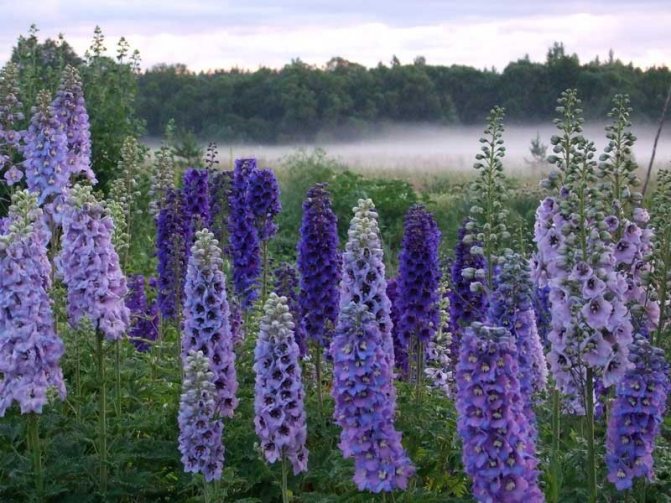

A rigid, erect stem departs from the thick fibrous roots of the delphinium. It does not branch, it can be either pubescent or non-pubescent. The leaves are attached to the stem with a petiole, located opposite. They are rather large, with a jagged or even edge, finger-pinnate.
Flowers of various colors are a special decoration - blue, white, pink, purple. They can also be two-tone, delicate pastel colors or bright "flashy" shades.
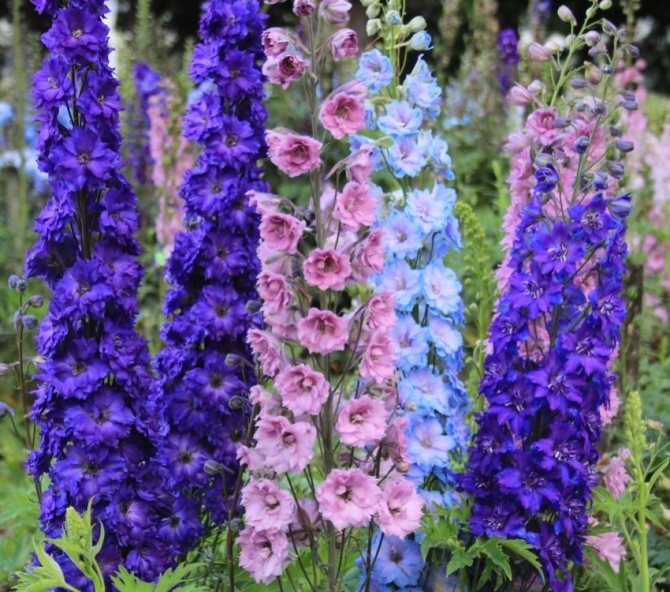

Flowers are collected in one pyramidal inflorescence. Its length can reach 100 cm. The diameter of an individual flower ranges from 4 to 6 cm. The flowers of the burgundy can be simple or double, depending on the species. Flowering occurs in June-July. Fragrant flowers attract many insects.
Delphiniums are unsuitable for food, as they are poisonous. The plant is also dangerous for herbivores.
Growing a delphinium from seeds
Growing from seeds is challenging but rewarding.
In this way, you can get seedlings of rare varieties of both perennial and annual delphiniums. Even though the seeds of good quality hybrids are very expensive, it still saves money as the seedlings are more expensive.
Sowing seeds for seedlings
Sowing seeds begins with buying them. First of all, you need to remember that delphinium seeds are best stored at low temperatures. If they are at home until spring or are stored in a store at a temperature of + 20-25 ° C, then their germination capacity is significantly reduced.
Therefore, you need to buy delphinium seeds in the fall after harvest. They must be fresh, marked with the current year.
Purchase seeds only from reputable growers or trading companies.Next, you need to put the seed bags in the refrigerator, and store them there until sowing.
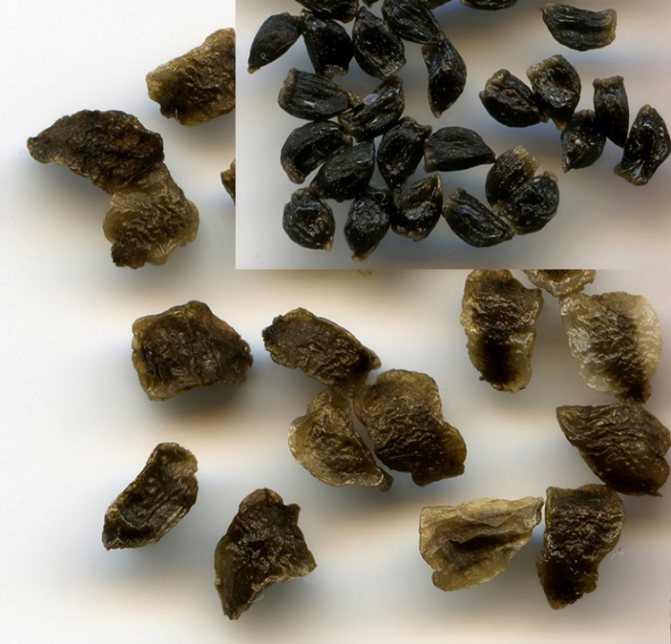

Preparing the seeds
It is known that the delphinium is susceptible to various diseases. That is why we carefully check the seeds for planting. If the agricultural company that sells them is reputable, then you can be sure that the seeds are processed. Otherwise, soak the delphinium seeds in a fungicide or bright potassium permanganate solution for 20 minutes.
Preparing the soil
For the same reason, that is, due to the susceptibility of the delphinium to various kinds of diseases, we carefully cultivate the land. To plant seedlings, you need to mix:
- 1 piece of garden land;
- 1 part of sod land;
- 1 part humus or compost;
- 0.5 parts of river sand.
This mixture must be calcined in an oven preheated to a temperature of 200C. Diseases and spores of fungi will die in 15-20 minutes. The pre-sifted soil is laid out on a baking sheet lined with thick paper.
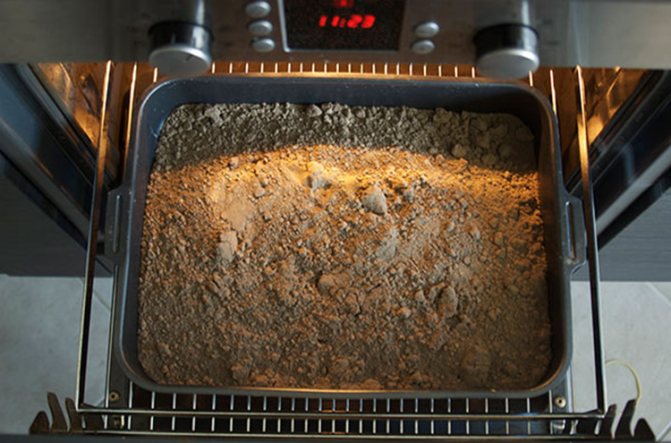

You can do the same in the microwave. In this case, you will need 5-7 minutes. During this time, all pathogenic microbes will die. Do not forget that the earth is placed in the microwave only in special dishes.
We sow seeds in previously prepared containers. They shouldn't be too big. Their height does not exceed 5-7 cm, otherwise the soil will acidify. The container must have drainage holes so that there is no stagnation of moisture.
The soil does not need to be poured up to the side, you need to leave 1-2 cm so that there is a little air exchange. The containers must be covered with lids to create high humidity. This will help the seeds to sprout faster.
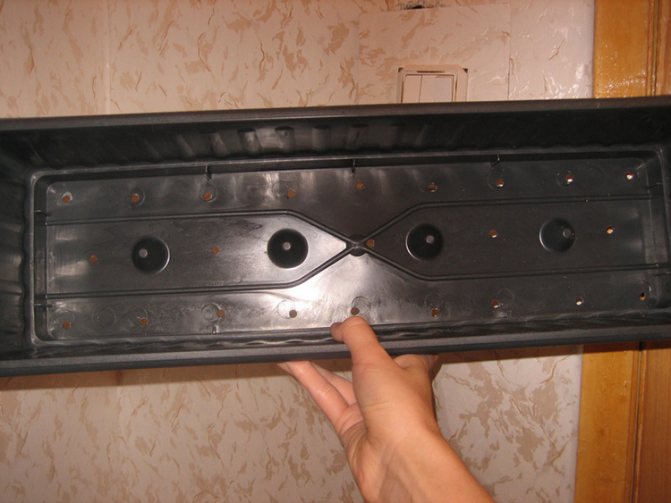

We sow the seeds
Before sowing, you can spill the soil with a solution of phytosporin or potassium permanganate. After that, the seeds are laid out on the surface of the soil, do not press them in and do not sprinkle them with earth. There are two ways to germinate seeds: with stratification and without stratification.
In the first method, the seeds are placed in a container in the refrigerator for 9-14 days. Covering with dark paper or cloth is not necessary as it is dark in the refrigerator. As soon as the first seedling appears, the container is immediately removed and placed on the windowsill. Otherwise, the plants may stretch out in the dark.
Some growers do without stratification. They place containers for germination under a lamp or on a windowsill. The temperature should not exceed 20C. Delphiniums are sown from mid-February to mid-March.
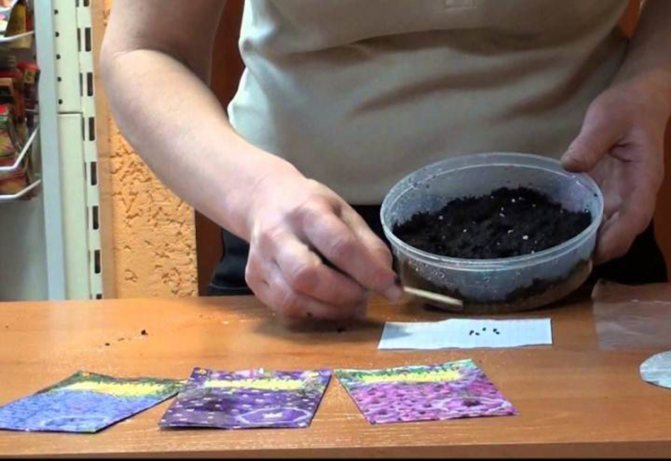

Seedling care
Care consists in maintaining the optimum temperature, timely watering and feeding the plant. Delphinium seedlings do not like high (over 22-25 ° C) and low (below 16 ° C) temperatures. With a strong decrease, there is a danger of disease of weak seedlings with a black leg or rot. Especially if you water the plants abundantly.
After the formation of 1-2 true leaves, the seedlings are transplanted into separate cups. The substrate for the cut seedlings should be prepared in the same way as for sowing seeds. That is, the soil must either be calcined in the oven, or frozen on the balcony during the winter.
Seedlings should be watered sparingly, avoiding overdrying of the soil or the formation of a "swamp". At the age of one month, the seedlings need to be fed with a complex mineral fertilizer. And do this about once or twice a month.
It is best to harden the seedlings before planting in open ground.
When to plant delphinium seedlings, in what month
When is it better to sow a crop at home? The optimal timing for sowing delphinium seeds is approximately end of February-beginning of March... But in different regions, the landing time varies, since there are different weather and climatic conditions:
- in the middle lane (including the suburbs), it is better to sow in mid-March;
- in Siberia, in the Urals, in the Leningrad region at the end of March;
- but in the South, it is optimal to sow seeds at the end of February.
It will also help to choose the right timing for planting a delphinium for seedlings Lunar calendar 2020:
- Suitable days for an annual: in February -1, 2, 3, 4, 5, 6, 7, 8, 10, 11, 12, 13, 14, 15, 16, 17, 18, 19, 20, 25, 26, 27, 28, 29 number;
- in March - 2, 3, 4, 5, 6, 7, 8, 10, 11, 12, 13, 14, 29, 30, 31;
- in April - 1, 2, 5, 6, 7, 9, 18, 19, 20, 24, 25.
- in February -1, 2, 3, 4, 5, 6, 7, 8, 10, 11, 12, 13, 14, 15, 16, 17, 18, 19, 20, 25, 26, 27, 28, 29 number;
- in February - 9, 21, 22, 23;
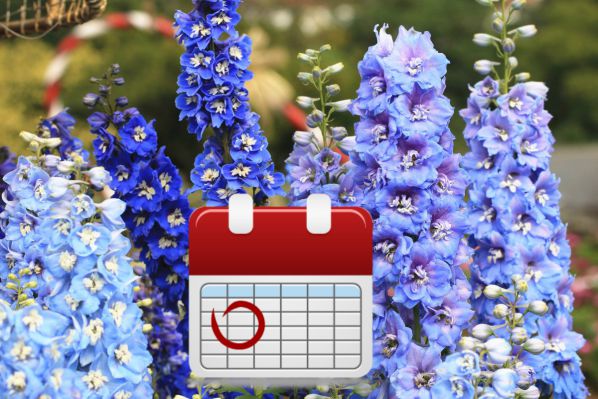

Sowing seeds in open ground
If it is not possible to plant seedlings in the spring, then you can sow in open ground before winter. Seeds are sown superficially from early October to early November. In this case, they undergo a stratification process in winter. In natural conditions, they germinate just like that.
This method involves a large consumption of seeds. Therefore, for winter sowing, your own seeds, from your own plants, are more suitable. Perennial hybrids of well-known breeding companies are not cheap. In addition, there are usually several of them in bags. There is a high degree of probability that they will go deep or not ascend for other reasons. They are best planted on seedlings at home in the spring.
When sowing in open ground, the seeds should be covered with any material that can be removed in early spring when shoots appear. To prevent the seeds from burying, the soil must be prepared before sowing. Dig up, loosen with a rake and let it stand for several days so that it thickens and settles.
Cuttings
Young shoots about 10 cm long are used as cuttings.
- The lower cut is treated with a root stimulator. For these purposes, an ordinary agave is suitable. In an adult aloe, the bottom leaf is torn off and kept in the refrigerator for 5 days.
- Next, the lower parts of the cuttings are moistened with aloe juice.
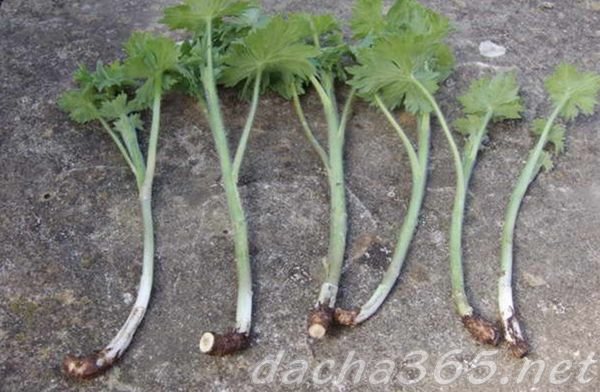

- Cuttings stick well-moistened sand or vermiculite. You can use Kornevin and similar agents.
- Containers with cuttings are covered with foil to maintain moisture.
- When the cuttings take root, they will put out new leaves.
- The grown seedlings are transplanted into open ground at the end of summer, so that they have time to adapt and take root before the cold snap.
Important! Delphiniums tolerate winter well in Central Russia, the main thing is to cover them with sawdust or dry peat.
What neighbors to choose for a delphinium
Delphinium does not like loneliness. It looks great against the background of green climbing plants, bushes and trees, which also block it from the wind. It also looks impressive in group plantings.
There are plants that delphinium works best with:
- phlox;
- chamomile;
- sage;
- geraniums;
- sander tobacco;
- mallow.
All plants with spike-shaped inflorescences look very good next to it. They can be either of the same height or in steps.
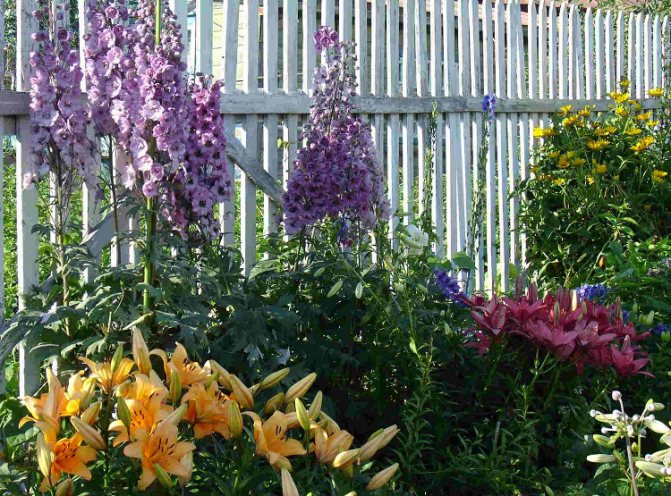

Reproduction and collection of seeds
To propagate this crop with seeds, it is important to collect them correctly. It is better to do this in dry weather, only from ripe fruits, but if they have already cracked, then it is better to choose brown fruits that have not had time to crack. It's important to catch the right moment! But you can also resort to collecting fruits that have just begun to turn brown, then let them ripen in a dry, well-ventilated room. If you use such a collection and thorough drying, then the quality of the seeds should turn out to be good. It is recommended to store the seeds in the refrigerator, or plant them immediately.
Important! The most beautiful plants with bright colors in flowers are obtained from the seeds of the first year of collection.
Planting a delphinium in open ground
Planting delphiniums in open ground is not difficult, but requires care. Compliance with all the rules of care will ensure continuous flowering from mid-summer until frost. You need to plant a delphinium in a lighted place, closed from the winds.
In the future, you need to ensure that the plant receives watering and feeding regularly and on time. Adult tall delphiniums need to be tied up, otherwise they will break. Strong, thin supports are chosen for the garter. They should be installed well before flowering to avoid damaging the root system.
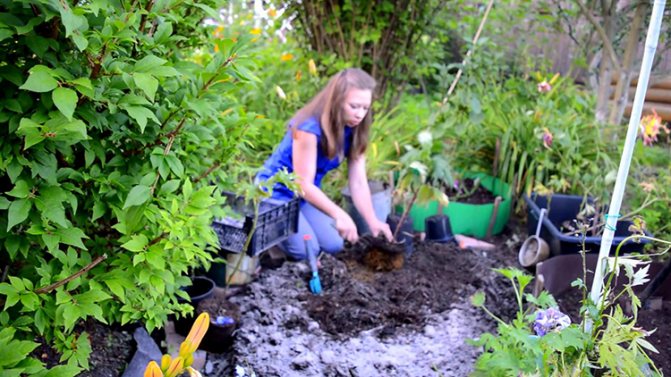

Soil preparation
The soil for delphiniums is prepared in the fall, digging it to the depth of a shovel bayonet and applying organic fertilizers. Manure, compost are laid in the soil, superphosphate and ash can be put in the fall.
If the plot of land on which delphiniums will grow is vacated in August-early September, then the future flower garden can be planted with green manure. They gently disinfect the soil, especially mustard. And, decomposing, they enrich it with nitrogen and other useful substances.
In the spring, the soil is once again dug up and loosened with a rake. For each plant, holes are made to a depth of slightly more than the container in which the seedlings are grown. Each is filled with humus or compost, a handful of ash and a matchbox of superphosphate.
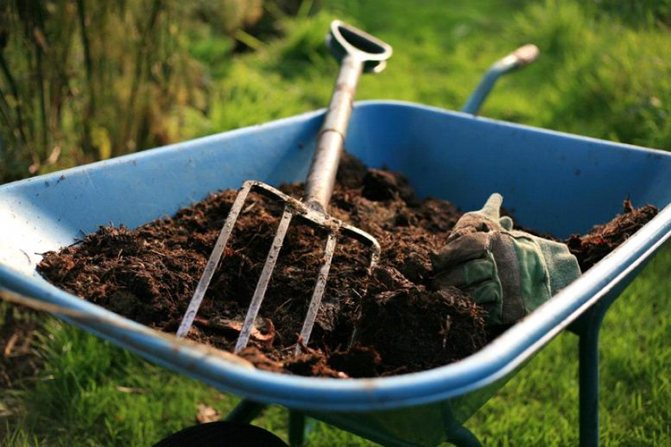

Landing
Seedlings are first spilled so that they are better removed from the cups. If the seedlings are purchased, the peduncles are cut off, and the pots, along with the plants, are soaked in Epin's solution or another growth stimulant. Often purchased delphiniums grow in dry soil. In this case, you need to soak for an hour or two, until the plant "gets drunk".
They plant him like this. The roots of the delphinium are dipped into the hole, and carefully sprinkled with earth. If the plant is small, for example, after division, then the buds of renewal must be sprinkled. They tamp the earth around so that it does not settle. Watering is not necessary because the seedlings have already been watered.
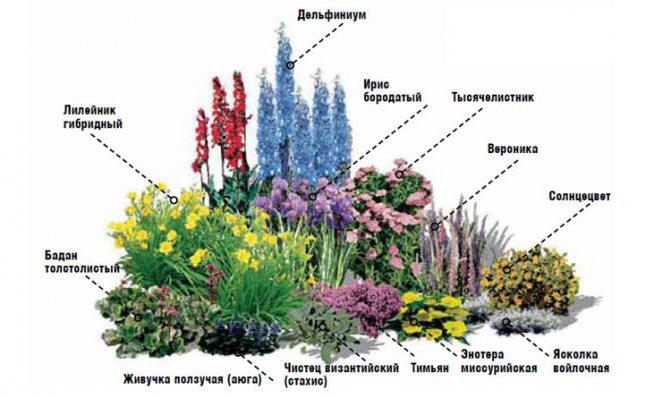

Requirements for soil, place
Before planting a perennial delphinium, it is necessary to select and prepare the soil. This plant does not tolerate acidic soils; neutral and fertile soil is more suitable. An excellent option would be to grow in fertilized, deep, drained, clayey, loamy, moderately moist, but not damp soils. If the land is predominantly acidic, then in the fall it must be prepared. To do this, you need to add a little slaked lime or dolomite flour to it - 100 g per 1 sq. m of land. Also, it will not be superfluous to fertilize the soil using peat or manure to enrich it with useful substances.
The place for planting must be chosen in advance, since delphiniums have a long and thin stem, it is preferable to plant them in areas protected from the wind. This culture really needs the sun, so it is advisable to choose a place that is well lit, but hidden from the midday heat, in order to prevent the flowers from burning out.
Delphinium care
In one place, the delphinium has been growing for at least 3 years.
In order for it to please the eye with its flowering all this time, it must be properly looked after. There are different opinions about the unpretentiousness of this plant.
Some consider it to be a rather unpretentious flower, because it can withstand prolonged drops in temperature. Others are a complex plant with a huge number of diseases.
If you observe watering on time, fertilize and transplant plants, then there should be no problems. Of course, the success of growing depends on many objective factors. For example, from the composition of the earth. Delphiniums grow best on loam. On sandy loam soils, the flower will be smaller and paler.
How to water and feed
Delphinium loves water, but an excessive amount of moisture negatively affects its development. It starts to hurt and rot. Watering, especially during dry periods, should be abundant. But at the same time, make sure that the water does not stagnate.
Top dressing is performed several times. Before planting, the soil is prepared by adding fertilizers, then, after planting, the delphinium is not fed for a month and a half. There is enough of everything in the soil for full development, and an excess of fertilizers during this period is especially harmful, since the plant must take root properly.
After that, we feed with complex mineral fertilizers about once a month. During the period of budding, flowering and after the plant has bloomed, we feed it with a complex fertilizer or phosphorus and potassium.To do this, take a tablespoon of superphosphate and a tablespoon of potassium sulfate on a bucket of water.
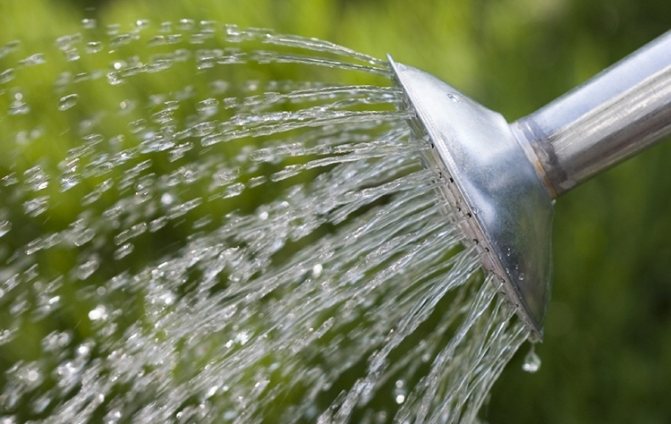

Delphinium after flowering
After flowering, we do top dressing (we do not include nitrogen fertilizers). Then we cut off all the inflorescences. If you want to get your own seeds, then the inflorescence must be kept. But the next year, the mother plant will not bloom so abundantly, since a lot of nutrients are spent on seed formation.
In the fall, you need to cut off the entire ground part. After that, the protruding stems must be covered with clay or put on caps so that water does not get there. The stalks of delphiniums are hollow and from stagnant water they begin to rot. This process occurs unnoticed at first. But as a result, you can lose the entire plant.
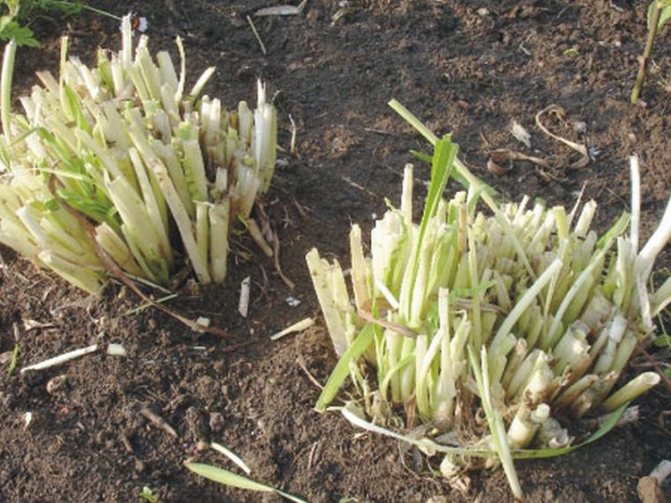

Delphinium care for the second year
In the spring of next year, after the emergence of shoots, the delphinium is abundantly shed, and then fed with mullein or Azophos. Leave 2-3 stems on the bushes, the rest are removed.
Someone grows a delphinium in one place for 3 years, someone for 5-6 years. It all depends on what kind of soil you have. On well-fertilized loam or clay soil, you can leave perennial plants longer. And on sandy or sandy loam, you need to change the place every three years, since the soil is quickly depleted.
Flower bed decoration with New Zealand delphinium, photo
They are planted in the background. The delphinium looks elegantly along walls and fences, which gives it additional protection from the wind. It looks very good if you make a hedge out of a delphinium or disguise an ugly barn with it.
It is very convenient to use these flowers for making bouquets, they can stand cut from 5-10 days. If you change the water daily and cut it back, they will last much longer.
A flower bed can be made from their single plantings, or you can make a background for a flower bed out of them. They look picturesque with a rose, a lily or a beautiful yucca.
How to propagate a delphinium
Delphinium is propagated vegetatively, by cuttings and dividing the bush, and by seeds. Seeds can be harvested from your plants. It must be remembered that seeds are not harvested from hybrids, because they do not transmit hereditary characteristics. As a result, the flowers will be of a different shade, size and shape. That is why the vegetative method is preferable.
Vegetative way
The most effective way to reproduce delphiniums is vegetative. At the same time, the accuracy of repetition of the maternal properties of the plant is guaranteed.
Propagation by cuttings
Reproduction by cuttings is done in the spring. While you are removing excess shoots on mature bushes, you can start rooting them. The stalk is taken small, 15-20 cm, a small piece of the rhizome should remain at the bottom of the stalk.
Cuttings are rooted in a special "school", a container filled with a loose substrate. To increase humidity, cover it with a transparent lid. After the stalk is rooted, the lid is removed.
If this is not possible, cuttings are planted in the shade of bushes or trees, where they feel quite comfortable.


Reproduction by dividing the bush
Old bushes must be divided. Sometimes the division of the bush coincides with a transplant to a new place. In the spring, as soon as the first shoots appear, they dig up a delphinium intended for reproduction. The delphinium root is shallow.
We shake off the ground and examine the bush. Divide with a sharp knife so that each part has a central shoot that will bloom this summer, renewal buds (they will bloom next year) and a root system.
Plants are planted in a new place, observing the same rules as when planting seedlings. But in order for the plant to quickly restore the disturbed root system, it is shaded for a short time, for two weeks, from the bright sun.
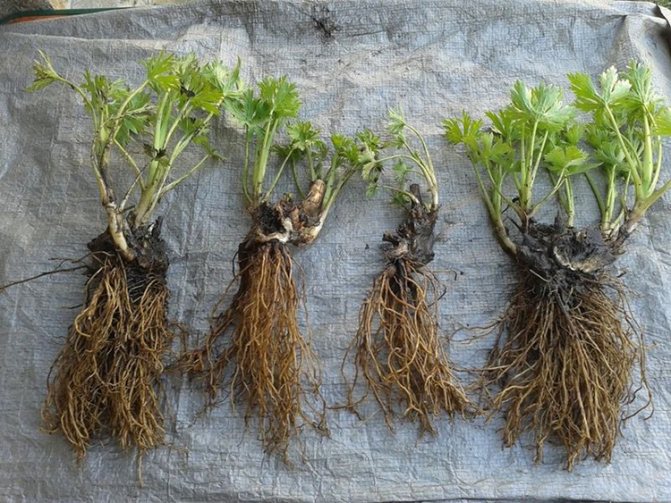

Features of planting a plant
For a plant with beautiful bright flowers to grow quickly, it is important to follow simple planting rules.They consist in the correct selection of the place and time of planting, in the correct preparation of the soil and, of course, in observing the rules for carrying out the planting itself.
Choosing a place
Planting a delphinium should be carried out in a sunny, windless place. The land should be loosened, free of weeds. It is desirable that there are no trees and bushes near the flowers, which can inhibit the growth of the delphinium with their roots. You need to plant flowers at a distance of 60 centimeters from each other. It is also important to take into account the peculiarities of planting each type of plant. You can find out about this from experienced florists. It is worth planting high varieties of plants separately from undersized bushes so that they do not cover the sun for them.
Planting timing
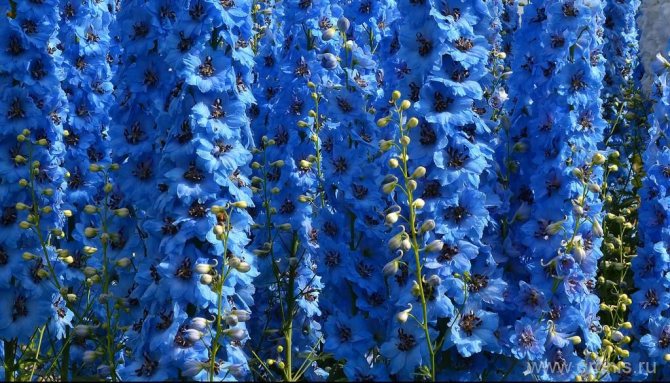

Plants can be planted in the ground, 10 centimeters high, in March - May. For rooting of higher varieties of plants, it is recommended to plant them in August - September, before the onset of frost. For summer planting, the stems of the plant must be cut in such a way that only 10 centimeters of the plant can be seen on the surface of the earth. It is not recommended to bury the kidneys with earth. After planting, the flowers must be protected from direct sunlight and watered regularly.
Preparing the soil
Before planting a delphinium, it is important to prepare the soil. The soil should be loamy, fertile, drained with a normal or neutral reaction. In the fall, where it is planned to plant a spur, it is important to dig up the earth, adding complex mineral fertilizer to it. Clay soil must be diluted with sand. The bottom of each hole is covered with broken slate, brick or rubble. Sour soil, flavored with lime, and sandy - peat.
Complex fertilizer can be replaced with such a mixture: three parts of potassium chloride are mixed with two parts of superphosphate and one part of ash.
Diseases and pests
Delphiniums are prone to blackleg disease and other infections due to water filling the hollow stem after pruning. As a result, the plant begins to rot. To prevent this from happening, the cut stems are covered with improvised material.
In damp and cold weather, powdery mildew may appear on the delphinium in the form of a white bloom on the leaves. As a preventive measure, the annual thinning of old plants is used. Powdery mildew treatment: spraying with a 0.5% solution of Bordeaux mixture. Otherwise, brown spots appear on the leaves, which grow and the plant dies.
Delphinium pests: delphinium fly, which hibernates in the roots of plants and slugs. Any insecticide is used against a fly that lays eggs in flower buds. They are sprayed with delphinium during the budding period. Slugs are most efficiently collected by hand.
Choosing a seat for landing
In order for a long-term delphinium to please you with all its beauty to the fullest, it is important to take into account many factors. Including proper seating and grooming, as well as choosing a landing site.
Such characteristics of delphiniums as:
- the brightness of the flowers and the duration of flowering;
- inflorescence density;
- healthy appearance, without signs of disease, with an even, not curved stem;
- abundance of aboveground mass;
- development of the root system.
When choosing a place for planting a spur (another name for delphiniums), first of all, the requirements for the soil should be taken into account, it should be:
- fertile;
- with a pre-applied complex of fertilizers;
- with neutral acidity;
- loamy.
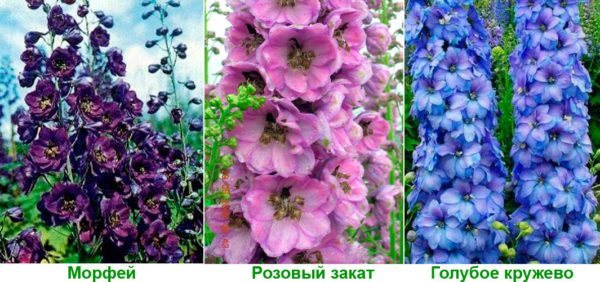

In addition, it is important to consider in the selected area:
- sufficient sunlight;
- the presence of light partial shade in the daytime;
- good air exchange;
- protection from winds.
Post-flowering care
When the delphiniums fade, the entire aerial part must be cut off, leaving segments 30 cm long. The protruding shoots must be covered with garden pitch, clay, or in another way. The fact is that the shoots have a hollow structure and, when cut, moisture enters the formed cavities, leading to rotting of the flower.
After the delphinium has bloomed, watering should be reduced to a minimum, natural watering will be quite sufficient.
However, with prolonged drought, watering is done, but not before the coming frosts.
Second year care
In the second year, plant care should be carried out in early spring. As soon as the sun warms up and the first shoots appear, it is necessary:
- not just water the delphinium, but shed the bush thoroughly;
- apply a nitrogenous complex of fertilizers or dilute a mullein for feeding;
- prune, removing all shoots, leaving 2 - 3 strongest.
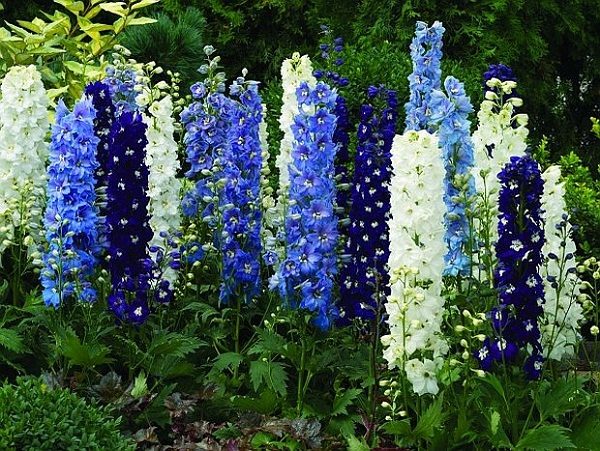

Further, leaving is the same as described above one month after planting.


